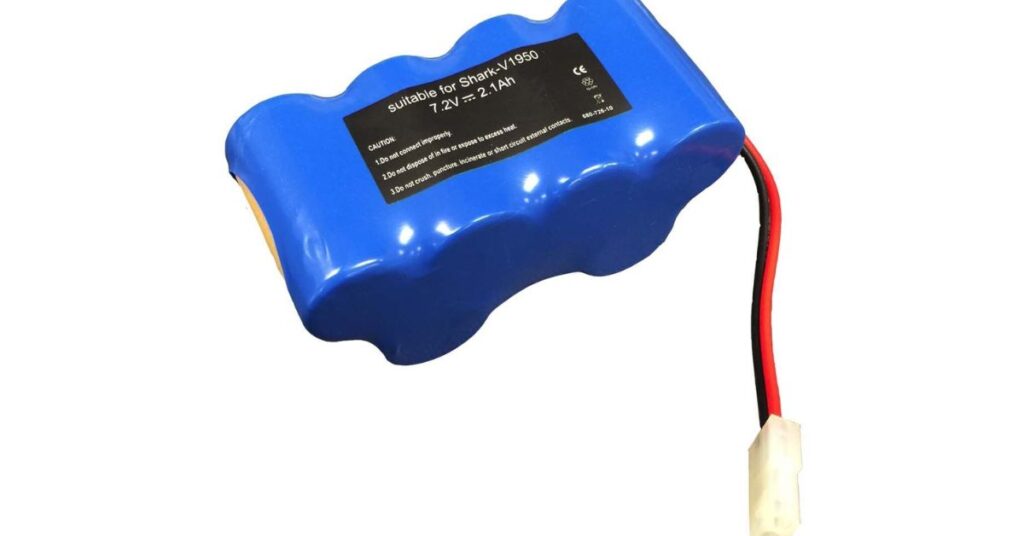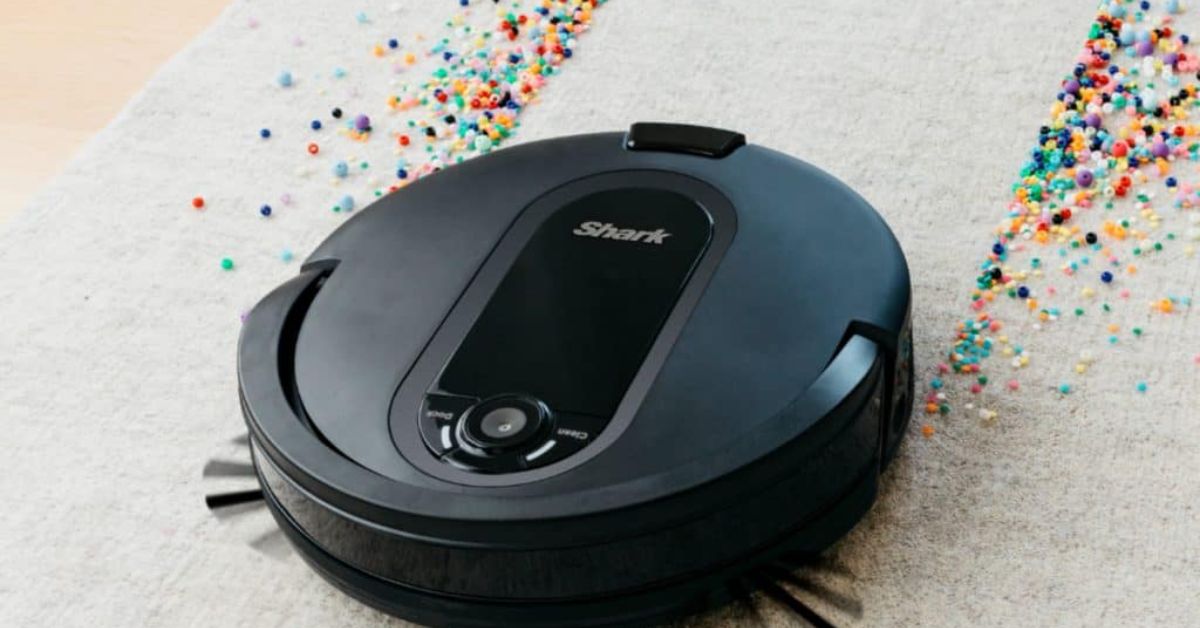Robot vacuums have revolutionised home cleaning, and Shark’s robot vacuum models are among the most popular. Their advanced mapping technology allows them to navigate and clean your home efficiently. However, even the best technology can face issues. Many Shark robot vacuum users experience problems with the mapping feature, which can resist the vacuum’s performance.
Whether it’s a weak Wi-Fi signal, dirty sensors, or obstructions in its path, there are common causes for mapping problems that you can troubleshoot. Let’s dive into the solutions to keep your Shark robot vacuum running smoothly and efficiently.
If you’ve noticed your Shark robot vacuum missing areas, creating inaccurate maps, or getting stuck, you’re not alone. These mapping issues can be frustrating, but they are often easy to fix. In this article, we will explore five proven ways to address Shark robot vacuum mapping issues. By following these steps, you can ensure your robot vacuum operates at its best, keeping your home clean and tidy.
Ensure Strong Wi-Fi Signal
A strong Wi-Fi signal is crucial for your Shark robot vacuum’s mapping capabilities. The robot relies on this connection to communicate with the app and navigate your home. If the Wi-Fi signal is weak or unstable, the robot may create incomplete or inaccurate maps, leading to inefficient cleaning.
To improve the Wi-Fi signal, move the router closer to the area where the vacuum operates. You can also use a Wi-Fi extender to boost the signal strength..
Check and Clean Sensors and Brushes
Sensors and brushes play a vital role in your Shark robot vacuum’s navigation and cleaning efficiency. Dirt and debris on these components can interfere with the robot’s ability to detect obstacles and map your home accurately. Regular maintenance is essential to prevent these issues.
Inspect and clean the sensors and brushes regularly. Use a soft cloth to wipe the sensors and a brush to remove any debris from the brushes. Keeping these parts clean ensures that your robot vacuum can navigate smoothly and create accurate maps of your home.
Remove Obstacles and Reconfigure Layout
Obstructions and changes in your home’s layout can cause mapping issues for your Shark robot vacuum. Objects like loose wires, toys, or furniture can block the robot’s path and prevent it from mapping the area correctly. Even minor changes in furniture placement can interrupt the vacuum’s mapping process.
Clear the robot’s path by removing any obstacles. By doing so, you help the robot create more accurate maps and improve its cleaning efficiency.
Restart the Mapping Process
Restarting the mapping process can help resolve issues with incomplete or inaccurate maps. This involves initiating a new mapping cycle, allowing the robot to explore your home from scratch. This fresh start can help the vacuum identify any previously missed or unrecognised areas.
To restart the mapping process, place your robot in the centre of the room and press the clean button twice. Wait for it to finish exploring the space.
Update Software and Perform a Factory Reset
Keeping the Shark Clean app and the robot’s firmware updated is crucial for resolving mapping issues. Software updates often include improvements and bug fixes that can enhance the robot’s performance. If updating the software doesn’t resolve the issue, performing a factory reset may help.
A factory reset erases all data and settings, providing a fresh start for the robot. This can be particularly useful if the mapping issues persist despite other troubleshooting steps.
Common Shark Robot Vacuum Mapping Issues
Common Shark robot vacuum mapping issues include incomplete or missing maps, inaccurate maps, and difficulty navigating. These problems often arise from weak Wi-Fi signals, obstacles, dirty sensors, or changes in the home’s layout.
Incomplete or No Map
One common issue is an incomplete or missing map. This can occur if the Wi-Fi signal is weak, the vacuum is not fully charged, or the surface is unlevel. These factors can disrupt the mapping process and lead to an incomplete map.
To fix this, ensure the vacuum has a strong Wi-Fi connection, is fully charged, and placed on a level surface. These simple steps can help the vacuum create a complete and accurate map of your home.
Inaccurate Map
An inaccurate map can be frustrating because it doesn’t match your home’s layout. This issue can be caused by dirty sensors, obstacles, or changes in your home’s setup.
Regularly clean the sensors and remove any obstacles from the robot’s path. If you’ve recently rearranged furniture, restart the mapping process to help the vacuum create a new, accurate map.
Difficulty Navigating
If your Shark robot vacuum has difficulty navigating or finding its way back to the dock, it can disrupt the cleaning process. This can occur due to debris on sensors, obstacles in its path, or inaccurate mapping. Ensuring clear paths and clean sensors is essential for smooth navigation.
Remove any obstacles and ensure the robot’s path to the dock is clear. Cleaning the sensors and brushes can also help the vacuum navigate more efficiently and return to the dock without issues.
Additional Troubleshooting Tips
Restart the Explore Run
Restarting the explore run can help resolve mapping problems. Place your robot in the centre of the room, press the clean button twice, and wait for it to finish exploring. This allows the vacuum to start the mapping process from scratch, potentially identifying any missed areas.
By restarting the explore run, you give the robot a fresh start to create a more accurate map. This can improve its overall performance and cleaning efficiency.
Check for Obstructions
Obstacles like loose wires, furniture, or toys can prevent the robot from mapping your home correctly. Check the area where the vacuum is having trouble and remove any obstructions.
Ensuring a clear path for the robot helps it navigate more efficiently and create a more accurate map of your home. Regularly checking for and removing obstacles is an easy way to maintain the vacuum’s performance.
Update the Application & Pair Robot Again
If your Shark IQ Robot is having trouble connecting to the app, ensure you have the latest version of the Shark Clean app installed. Then, follow the instructions in the app to pair the robot again. This can resolve connectivity issues and improve the robot’s performance.
Updating the app and re-pairing the robot ensures that you are using the latest features and settings. This can help resolve mapping issues and enhance the overall functionality of the robot vacuum.
Check Power Status
A low battery can hinder the mapping process. Make sure your Shark IQ Robot is fully charged before attempting to map your home. Place it on its charging dock for at least 3 hours to ensure it has enough power to complete the mapping.
Ensuring the robot is fully charged helps it perform better and create a more accurate map. Regularly checking and maintaining the battery level is essential for optimal performance.
Factory Reset Your Robot
If you’ve tried all other steps and are still experiencing mapping problems, a factory reset may help. Press and hold the dock and clean buttons simultaneously for 10 seconds to reset the robot. This will erase all data and settings, providing a fresh start for the mapping process.
Performing a factory reset can resolve persistent issues and ensure the robot operates with the latest settings. This step is particularly useful if other troubleshooting methods have not resolved the problem.
Why Your Robot Vacuum Keeps Stopping (And How to Fix It)

Robot vacuums often stop due to low battery, tangled brushes, clogged suction, or software issues. Regular maintenance, clearing obstructions, ensuring proper charging, and keeping software updated can help fix these problems and improve performance.
Insufficient Battery Life
Robotic vacuums sometimes stop in the middle of cleaning due to a low battery or poor battery health. Ensuring the robot is properly charged is the first step in troubleshooting this issue. Regularly check the battery levels and charge the vacuum as needed.
A fully charged robot vacuum performs better and completes cleaning tasks without interruptions. Maintaining the battery health is crucial for the vacuum’s efficiency and longevity.
Tangled Brushes, Clogged Suction, Wheel Obstructions
Physical obstructions like tangled brushes, clogged suction, or wheel obstructions can cause the vacuum to stop. Regularly inspect and clean these components to ensure the vacuum operates smoothly. Use a brush to remove any debris and clear any clogs in the suction system.
Keeping the brushes and suction system clean prevents the vacuum from stopping unexpectedly. Regular maintenance is essential for the vacuum’s optimal performance.
Faulty Motors
A malfunctioning or worn-out motor can cause the robot vacuum to stop. This issue is more common in cheaper models with low-quality materials. If you suspect a motor issue, contact customer service for assistance or consider replacing the motor component.
Ensuring the motors are functioning correctly is crucial for the vacuum’s performance. Regular maintenance and timely replacements can extend the vacuum’s lifespan.
Obstacle Detection and Sensor Issues
Dirty sensors can lead to the robot pausing because it thinks something is in front of it. Cleaning the sensors with a soft cloth can resolve this issue. If the problem persists, the sensors may be malfunctioning, and you may need to contact customer service.
Regularly cleaning the sensors helps the vacuum navigate accurately and prevents it from stopping unexpectedly. This simple maintenance step can improve the vacuum’s overall performance.
Software or Firmware Issues
Outdated or buggy software can cause the vacuum to stop. Check for any pending updates to the Shark Clean app and the robot’s firmware. Updating the software can resolve many operational issues and improve the vacuum’s performance.
Keeping the software up to date ensures the vacuum operates with the latest features and bug fixes. This step is crucial for maintaining the vacuum’s efficiency and functionality.
Wi-Fi Connectivity
Wi-Fi connectivity issues can affect the robot vacuum’s performance. Ensure a strong and stable Wi-Fi connection to prevent disruptions. If the vacuum has trouble connecting to Wi-Fi, try moving the router closer or using a Wi-Fi extender.
Maintaining a strong Wi-Fi connection helps the vacuum perform better and prevents mapping issues. Regularly checking and optimizing the Wi-Fi connection is essential for the vacuum’s efficiency.
The Bin Needs Emptying
Empty the dust bin regularly to ensure the vacuum operates without interruptions. A full bin can prevent the vacuum from picking up more debris and cause it to stop frequently.
By keeping the dust bin empty, you allow the vacuum to maintain its cleaning efficiency. Regularly checking and emptying the bin is a simple but important maintenance task.
Overheating
Overheating can cause the vacuum to stop to prevent motor damage. This can happen if the filters are clogged or the airflow is blocked. Ensure that the filters are clean and there is proper ventilation around the vacuum.
Preventing overheating helps the vacuum run smoothly and extends its lifespan. Regular maintenance and proper placement can help avoid this issue.
Preventative Measures and Best Practices for Smart Vacuums
Regular Maintenance Schedule
Establishing a regular maintenance routine is essential for keeping your robot vacuum in good working condition. This includes washing the filter every 1-2 weeks, replacing it every six months, cleaning the main brush once a month, and wiping debris from the wheels.
A consistent maintenance schedule helps the vacuum perform optimally and prolongs its lifespan. Regularly checking and maintaining the vacuum ensures it operates efficiently.
Proper Placement of Charging Dock
Position the charging dock in an open, centralised area with sufficient space. This ensures the vacuum can dock and undock without encountering obstacles and allows for adequate ventilation.
Proper placement of the charging dock is crucial for seamless charging and efficient operation. Ensuring a clear and stable location for the dock helps the vacuum return to charge without issues.
Take Care of the Battery Health

Running the vacuum too frequently, not allowing it to fully charge, or not having a proper charging routine can degrade the battery. Charge the vacuum at regular times, avoid letting the battery fully die before recharging, and place the charging dock in a suitable environment.
Read Also This blog: Fashion 6 Cell 10.8V 4001mAh-5000mAh Replacement Laptop Battery for ASUS
Maintaining good battery health is essential for the vacuum’s performance and longevity. Following these practices helps ensure the vacuum operates effectively and has a longer battery life.
FAQ’s
Why is my Shark robot vacuum not mapping correctly?
Your Shark robot vacuum may not be mapping correctly due to weak Wi-Fi, dirty sensors, obstacles, or an unlevel surface affecting its navigation and mapping accuracy.
How important is mapping for a robot vacuum?
Mapping is crucial for a robot vacuum as it enables efficient navigation, systematic cleaning, and the ability to avoid obstacles, ensuring thorough and consistent cleaning coverage of your home.
How do robot vacuums work without mapping?
Robot vacuums without mapping use random or systematic cleaning patterns, relying on sensors to detect obstacles and adjust their paths, but may miss spots or be less efficient than mapped vacuums.
Will Shark robots keep updating the map?
Yes, the Shark robot vacuum will continue updating the map as it navigates your home, adjusting to changes in the environment and improving its cleaning efficiency over time.
How do I remap my Shark robot vacuum?
To remap your Shark robot vacuum, reset the mapping by pressing and holding the Dock and Spot buttons simultaneously until the power button blinks, then allow it to create a new map.
Conclusion
Maintaining your Shark robot vacuum’s mapping and performance involves regular troubleshooting and preventive measures. Ensuring a strong Wi-Fi signal, cleaning sensors and brushes, removing obstacles, restarting the mapping process, and updating the software are essential steps. Addressing common issues like low battery, tangled brushes, and overheating helps prevent frequent stops and enhances efficiency.
By following these proven methods to fix mapping issues, you can ensure your Shark robot vacuum operates smoothly, keeping your home clean effectively. Regular maintenance and proper handling extend the vacuum’s lifespan, making it a reliable and efficient cleaning companion. Consistent care not only resolves mapping problems but also optimizes the overall performance of your Shark robot vacuum.

BagisPack.com: Your ultimate travel companion. Explore expert travel tips, packing guides, and destination insights. Empowering adventurers with essential advice for seamless journeys around the globe.








